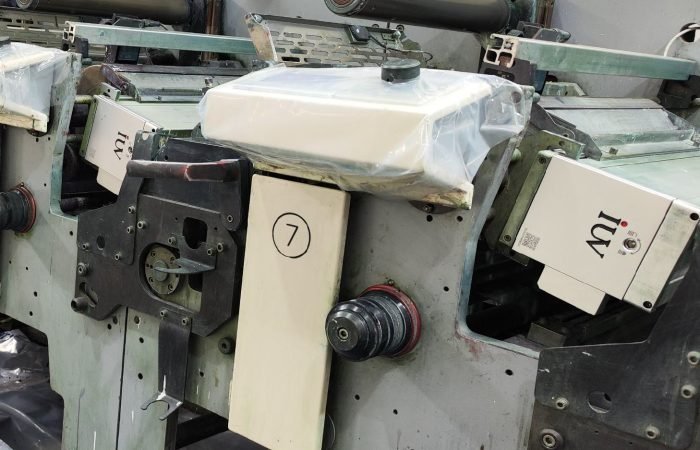The printing industry is constantly evolving. New technologies emerge, promising better quality and efficiency. LED curing systems are a prime example. They offer significant advantages over traditional UV curing methods. This is especially true for offset printing. Precision, speed, and energy savings are the hallmarks of this modern approach.
Offset printing, also known as lithography, is a widely used technique. It’s known for its high-quality results. Traditionally, mercury vapor lamps were used for UV curing. These lamps have served the industry well. However, they come with drawbacks. They consume a lot of energy. They also generate a lot of heat. This heat can affect the substrate. It can also lead to slower production speeds. Furthermore, mercury lamps have a shorter lifespan. They require more frequent replacement.
LED UV curing systems represent a paradigm shift. They use light-emitting diodes (LEDs) to cure inks and coatings. This technology offers several key benefits. First, LEDs are highly energy-efficient. They use significantly less power than mercury lamps. This translates to lower operating costs. It also reduces the environmental footprint of the printing operation.
Speed is another critical factor. LED systems can achieve faster curing speeds. This is due to their intense and consistent light output. The precise wavelength of LED light can be tailored. This ensures optimal ink and coating polymerization. Faster curing means faster production. This directly impacts throughput. Businesses can complete more jobs in less time. This is invaluable in today’s fast-paced market.
Precision is paramount in printing. LED curing offers enhanced control. The light output is stable and uniform across the entire curing area. This leads to consistent ink and coating performance. It minimizes batch-to-batch variation. The precise wavelength control also allows for curing a wider range of inks and coatings. This includes specially formulated UV-curable inks. These inks offer excellent adhesion and durability. They are essential for demanding applications.
The narrow width of narrow web printing is a perfect fit for LED technology. Narrow web presses are common in label and flexible packaging production. These presses often run at very high speeds. They also deal with a variety of substrates. These can include heat-sensitive films. The low heat output of LED curing systems is a major advantage here. It prevents substrate distortion. It maintains the integrity of delicate materials. This ensures high-quality prints on every label and package.
Flexographic printing also benefits immensely from LED UV curing. Flexo printing is widely used for packaging, labels, and commercial printing. It relies on flexible printing plates. LED curing allows for faster press speeds. It also enables the use of more sensitive inks. The consistent curing ensures sharp dot definition. It also provides excellent ink laydown. This is crucial for vibrant graphics and clear text. The reduced heat generation is also beneficial for flexo’s thinner substrates.
For sheetfed offset printing, LED curing brings new possibilities. While sheetfed presses might not always operate at the extreme speeds of web presses, consistency and quality are key. LED systems provide a stable UV output. This leads to superior gloss and matte finishes. It also enhances the durability of the printed sheet. The lower energy consumption contributes to operational savings. The reduced heat can also simplify post-press handling. Sheets are ready for stacking and further processing sooner.
Understanding UV curing is essential for appreciating LED technology. UV curing involves a photochemical process. UV light initiates a polymerization reaction. This reaction transforms liquid ink or coating into a solid film. Traditional mercury lamps emit a broad spectrum of UV light. This can include wavelengths that are not optimal for curing. It can also produce unwanted heat.
LEDs, on the other hand, emit light at very specific wavelengths. These wavelengths can be precisely chosen. They are often in the UVA range (365-405 nm). This targeted emission ensures efficient energy transfer. It maximizes the polymerization rate of UV-curable inks and coatings. This efficiency is a core reason for the speed and energy savings.
The environmental benefits of LED curing are substantial. Less energy consumption means a smaller carbon footprint. Many mercury lamps contain hazardous materials. LEDs are free from such substances. This makes disposal more environmentally friendly. The longer lifespan of LEDs also means less waste from lamp replacements.
In narrow web printing applications, especially for labels, the demands are high. Labels often require excellent scratch and chemical resistance. They need to withstand harsh conditions. UV-curable inks and coatings provide these properties. LED curing ensures these properties are fully developed. This is thanks to the precise and efficient curing process. The ability to cure on a variety of substrates, including plastics and foils, is critical. LED technology excels in this area.
For businesses exploring new printing technologies, LED curing systems are a compelling choice. They offer a clear path to improved efficiency. They deliver higher print quality. They also contribute to cost reduction and environmental responsibility. The integration of LED curing into offset, flexo, and narrow web printing workflows is transforming the industry. It is enabling printers to meet the demands of a dynamic market. The future of printing is certainly brighter with LED technology.












